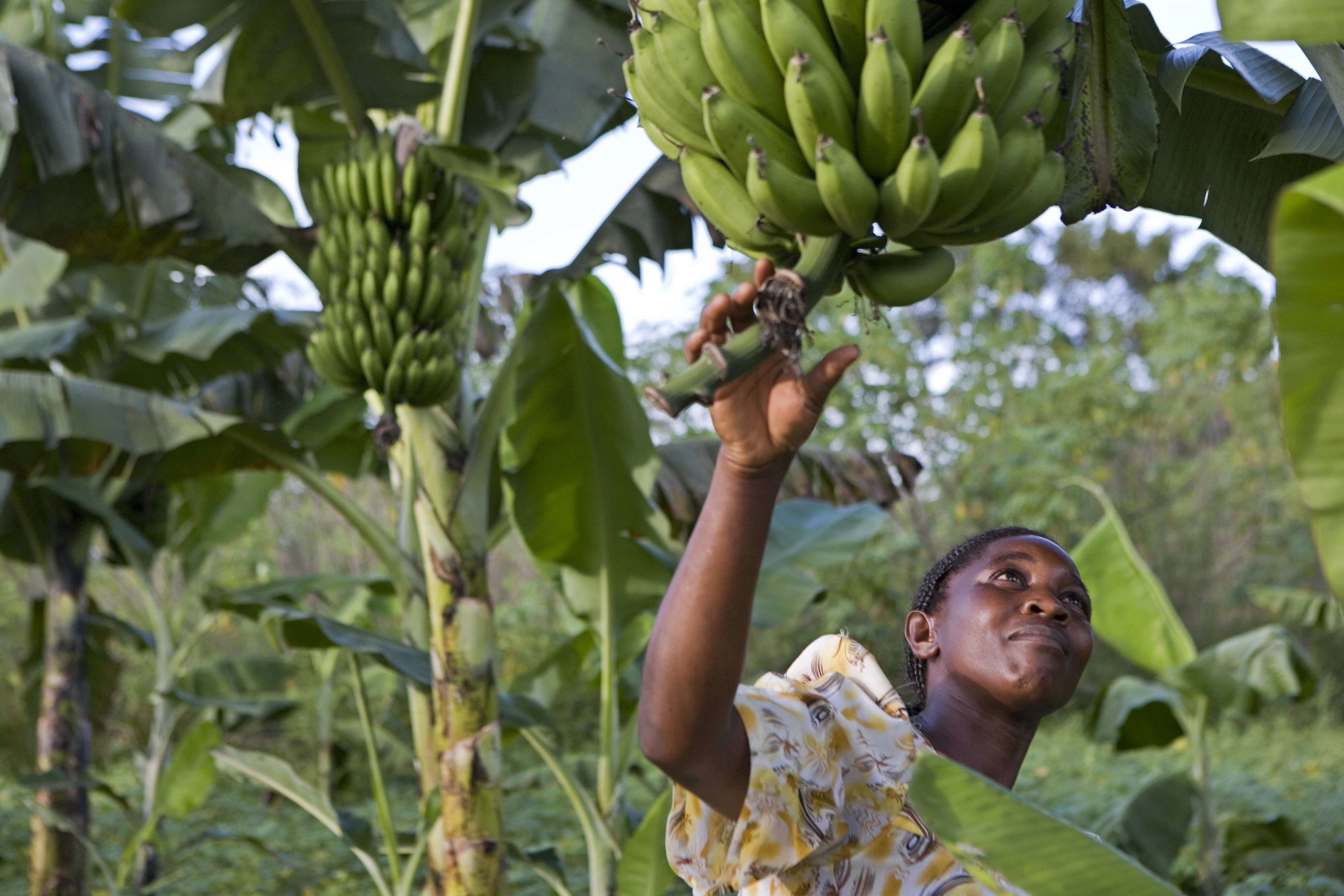For years, speculation about the poor quality of vital agricultural supplies in the African nation of Uganda has focused on questions of deliberate tampering with products – adding rocks to bags of seed in order to charge more money for the heavier product, for instance. But in a recent publication, two UConn researchers found no evidence of deliberate adulteration – but plenty of proof that mismanagement and inadequate infrastructure pose a significant problem for Ugandan farmers.
“For whatever reason, there’s very little research in Africa on the food supply chain,” says Nathan Fiala, Assistant Professor in UConn’s Agricultural and Resource Economics department. Part of Fiala’s work has been aimed at improving our understanding of these supply chains, so when an organization contacted him and co-author and PhD student Alicia Barriga to further investigate this concerning trend, they were eager to learn more.
Barriga explains that in Uganda, as in some other Sub-Saharan African and developing countries elsewhere, small-scale farmers rely on agriculture for subsistence. The local government and non-governmental organizations (NGOs) have made efforts to improve agricultural technology and production to ultimately reduce hunger. Overall food security has improved in Uganda, yet it remains uneven across the country, and there are vulnerabilities, especially in regards to weather and internal conflict, says Barriga. For example, in 2019 several districts reported acute an food crisis due to heavy rain, pests, and diseases.
Fiala says that Uganda’s supply chain is an interesting one to study because food security and food insecurity are so evident in the country.
“People in Uganda don’t eat three meals a day seven days a week generally,” he says. “We see lots of skipping of meals, and people oftentimes only eat one or two times a day, generally due to food insecurity and poverty.”
In the fertile land of Uganda, Fiala says, you can plant seeds pretty much anywhere and the seeds will grow. Despite this, food productivity remains low, and previous studies revealed discrepancies in the quality of agricultural supplies like seeds and fertilizers.
Agricultural inputs like seeds, fertilizers, and herbicides oftentimes show signs of corruption from other materials. Barriga says that seeds, for example, can be mixed with rocks, dirt, or sand in order to bulk the bags up.
Fiala explains that authors of previous studies surmised the discrepancies were due to adulteration of the product, and as often happens, people jumped to the conclusion that the supplies were being purposefully corrupted. This explanation prevails despite lack of evidence of tampering.
To investigate these claims, Fiala and Barriga sampled along the seed supply chain in a method called a “mystery shopper approach” from seed sellers all the way to the farmer. The seeds were then tested for purity, germination, rigor, and DNA similarity. What they found was surprising.
“We found absolutely no evidence of adulteration. What it looks like is that along the supply chain the materials are being handled improperly. The discrepancies we see in the quality of the supplies is likely due to mismanagement,” says Fiala.
“For example, if you get a bag of fertilizer and throw it into the back of a truck and transport it to the north of the country where it’s hot and you don’t have a refrigerated truck, the fertilizer can lose half its nitrogen. This loss is just through transportation, not adulteration.”
The mishandling of the supplies is not malicious or deliberate — these supplies are being handled this way because there is simply no infrastructure in place to handle them properly. For instance, access to refrigerated trucks or buildings may be minimal or non-existent.
“We use the words ‘corruption’ and ‘adulteration’ when we don’t really know what that is, and it is hard to distinguish deliberate actions from just incompetence and mismanagement,” he says. “When researchers say corruption they are combining corruption and mismanagement together.”
Fiala also points out that there remains a market for fertilizer and seed. If the supplies were all bad, it is reasonable to conclude the market would have disappeared.
“The answer is the supplies are not that bad on average but there is high variation, which can be bad news if you are a farmer,” he says.
Though this research could have major policy implications, Fiala says it is unlikely to lead to efforts in the near term to improve the supply chain and food security for Ugandan citizens anytime soon.
“I have spoken to the Ugandan government about this and they are really interested in this work but they have no money and there is no political will to react,” he says. “The economic return to government is low, and focus is on things like manufacturing and economic growth. Most people don’t see the last-mile farmer as a way to improve growth. This will probably only get worse due to the COVID-19 crisis.”



